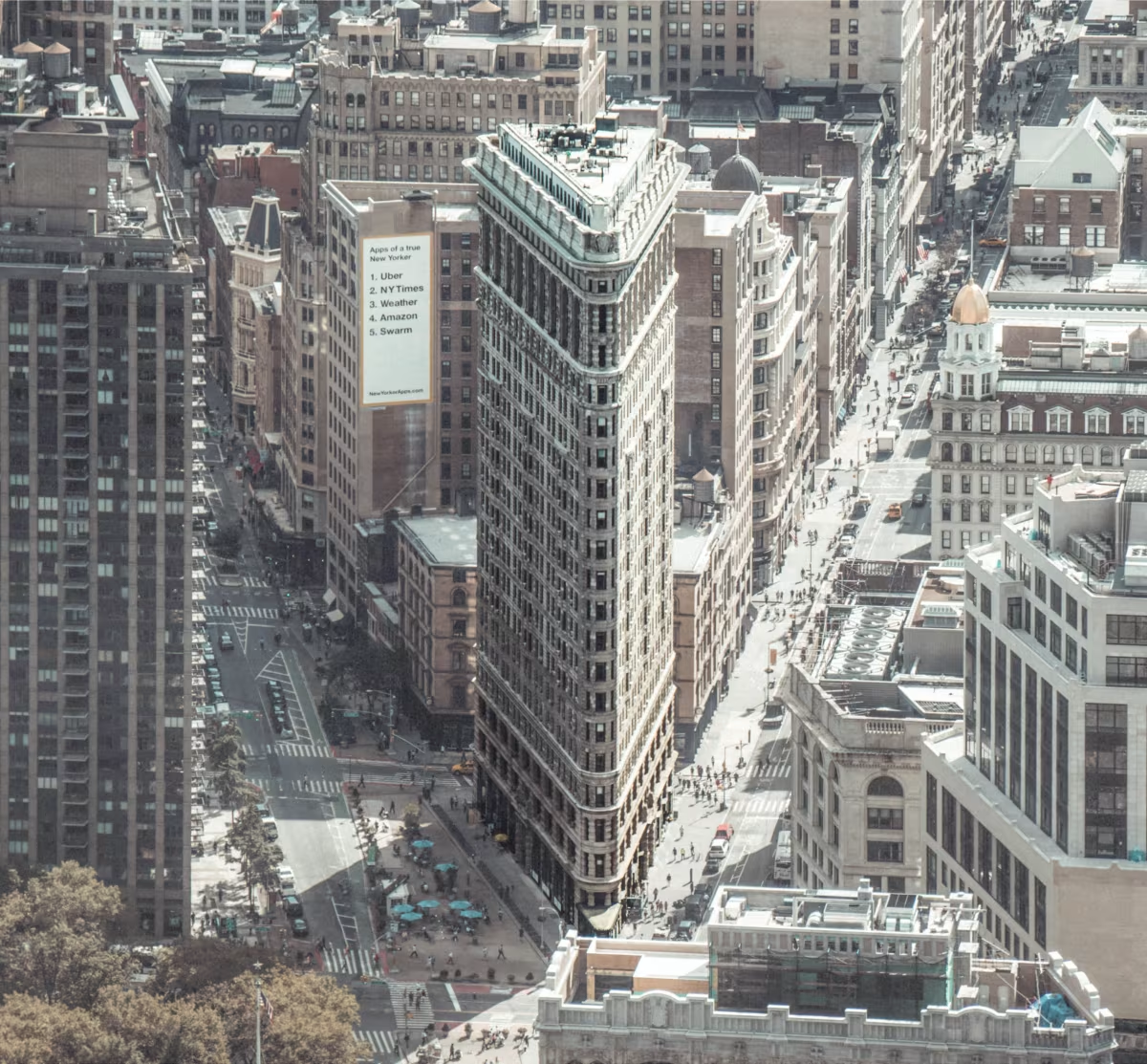Flatiron Building vs Metropolitan Life Insurance Company Tower


Comparing the Flatiron Building and the Metropolitan Life Insurance Company Tower is interesting because they both rise in New York, NY, yet they were conceived by two different design teams, D. H. Burnham & Company and Napoleon LeBrun & Sons, and were completed at different points in time. They were finished more than 7 years apart.
This contrast within the same city allows us to see how different creative minds interpreted the evolving needs of New York across time.
Let's take a closer look!
Height & Size
The Metropolitan Life Insurance Company Tower is clearly the larger tower of the two, both in terms of height and number of floors. It rises to 699ft (213m) with 50 floors above ground, while the Flatiron Building reaches 285ft (87m) with 21 floors above ground.
Of course, each project may have faced different briefs or regulatory constraints, which we don't really know about and could also explain the outcome.
Architectural Style
Both the Flatiron Building and the Metropolitan Life Insurance Company Tower were designed in line with the aesthetic conventions of the Neoclassical style.
At the time, this style was at the height of its popularity. So both D. H. Burnham & Company and Napoleon LeBrun & Sons followed what was in many ways expected of them, producing designs that fit comfortably within contemporary architectural norms, rather than breaking with convention.
Uses
The Flatiron Building is primarily residential, while the Metropolitan Life Insurance Company Tower is primarily hotel.
However, both of them have shifted purpose since their completion. The Flatiron Building evolved from commercial to residential, while the Metropolitan Life Insurance Company Tower moved from commercial to hotel.
The Metropolitan Life Insurance Company Tower incorporates a 5-star hotel with 273 rooms. More information is available at the official website.
Structure & Facade
Both towers share the same structural solution, a Frame system.
A frame structure uses a grid of columns and beams to carry the building's loads. This frees the walls from structural duties, allowing for flexible floor plans and larger windows.
However, when it comes to the facade, both buildings use different approaches. The Flatiron Building uses a Modular facade, while the Metropolitan Life Insurance Company Tower uses a Masonry facade.
A Modular facade like the one seen in the Flatiron Building employs prefabricated panels, often mixing solid surfaces with smaller windows, while a masonry facade like the one seen in the Metropolitan Life Insurance Company Tower features a heavy masonry skin that gives it a more clasical look.
| Flatiron Building | Metropolitan Life Insurance Company Tower | |
|---|---|---|
| D. H. Burnham & Company | Architect | Napoleon LeBrun & Sons |
| 1901 | Construction Started | 1905 |
| 1902 | Year Completed | 1909 |
| Neoclassical | Architectural Style | Neoclassical |
| Commercial | Original Use | Commercial |
| Residential | Current Use | Hotel |
| 21 | Floors Above Ground | 50 |
| 87 m | Height (m) | 213 m |
| Frame | Structure Type | Frame |
| Steel | Vertical Structure Material | Masonry And Steel |
| No | Facade Structural? | No |
| Limestone, Terracotta | Main Facade Material | Marble, Limestone, Glass |
| George A. Fuller Construction Co. | Main Contractor | Post & McCord |
| Purdy And Henderson | Structural Engineer | Purdy & Henderson |
| NY | State | NY |
| New York | City | New York |
| 175 5th Ave | Address | 1 Madison Avenue |